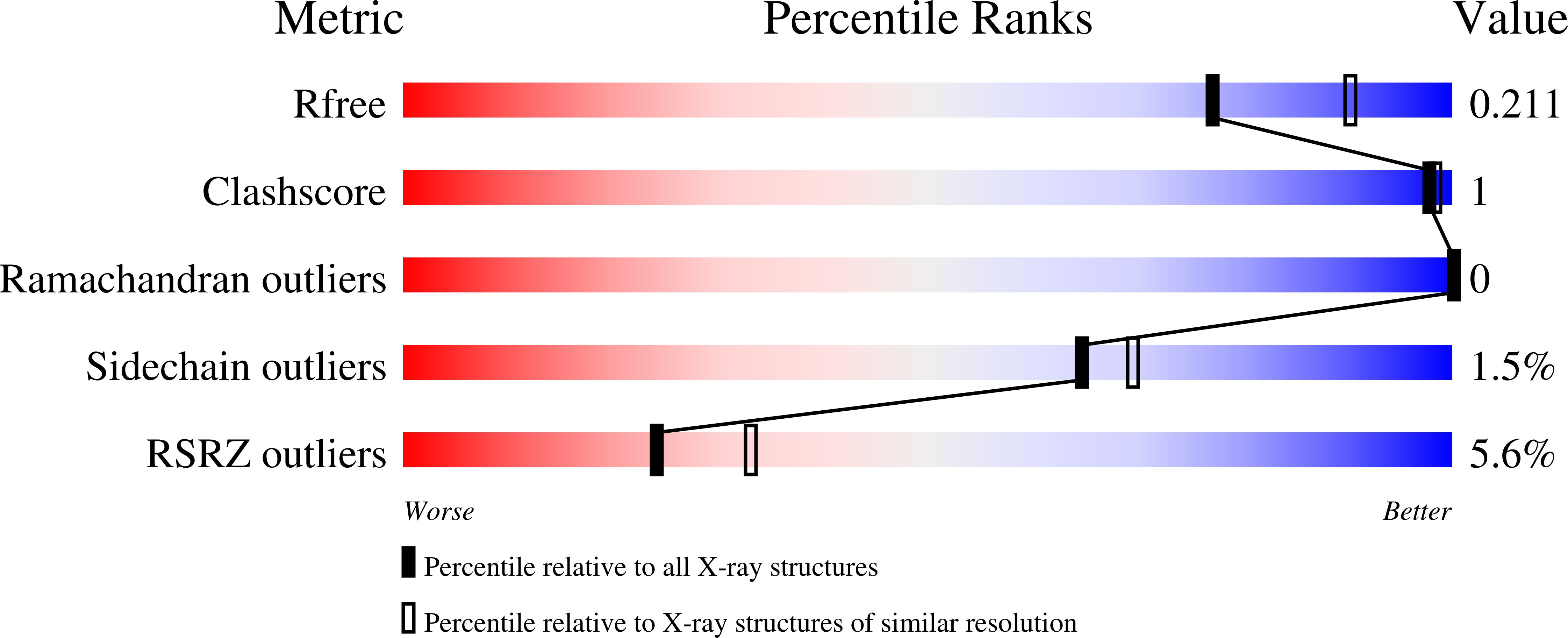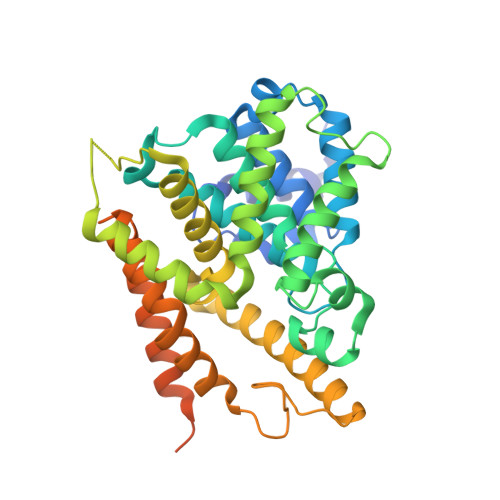Identification of imidazo[1,2-b]pyridazine TYK2 pseudokinase ligands as potent and selective allosteric inhibitors of TYK2 signalling.
Moslin, R., Gardner, D., Santella, J., Zhang, Y., Duncia, J.V., Liu, C., Lin, J., Tokarski, J.S., Strnad, J., Pedicord, D., Chen, J., Blat, Y., Zupa-Fernandez, A., Cheng, L., Sun, H., Chaudhry, C., Huang, C., D'Arienzo, C., Sack, J.S., Muckelbauer, J.K., Chang, C., Tredup, J., Xie, D., Aranibar, N., Burke, J.R., Carter, P.H., Weinstein, D.S.(2017) Medchemcomm 8: 700-712
- PubMed: 30108788
- DOI: https://doi.org/10.1039/c6md00560h
- Primary Citation of Related Structures:
5TKB, 5TKD - PubMed Abstract:
As a member of the Janus (JAK) family of non-receptor tyrosine kinases, TYK2 mediates the signaling of pro-inflammatory cytokines including IL-12, IL-23 and type 1 interferon (IFN), and therefore represents an attractive potential target for treating the various immuno-inflammatory diseases in which these cytokines have been shown to play a role. Following up on our previous report that ligands to the pseudokinase domain (JH2) of TYK2 suppress cytokine-mediated receptor activation of the catalytic (JH1) domain, the imidazo[1,2- b ]pyridazine (IZP) 7 was identified as a promising hit compound. Through iterative modification of each of the substituents of the IZP scaffold, the cellular potency was improved while maintaining selectivity over the JH1 domain. These studies led to the discovery of the JH2-selective TYK2 inhibitor 29 , which provided encouraging systemic exposures after oral dosing in mice. Phosphodiesterase 4 (PDE4) was identified as an off-target and potential liability of the IZP ligands, and selectivity for TYK2 JH2 over this enzyme was obtained by elaborating along selectivity vectors determined from analyses of X-ray co-crystal structures of representative ligands of the IZP class bound to both proteins.
Organizational Affiliation:
Bristol-Myers Squibb Research , Princeton , New Jersey , USA . Email: [email protected].



















